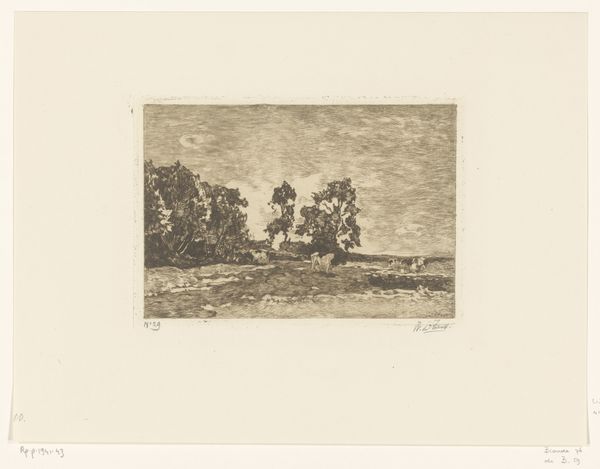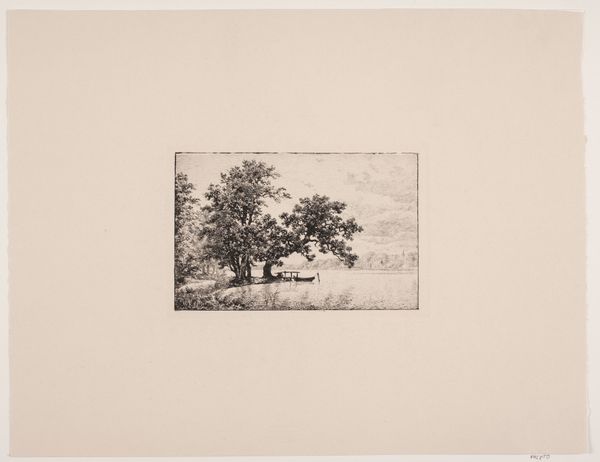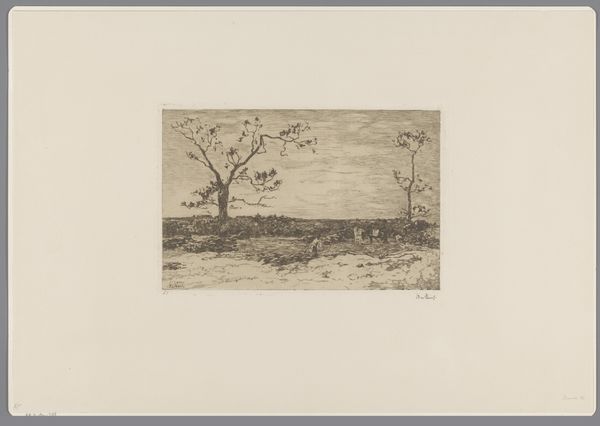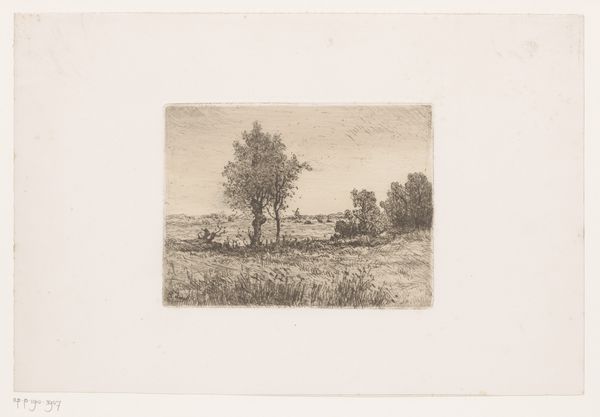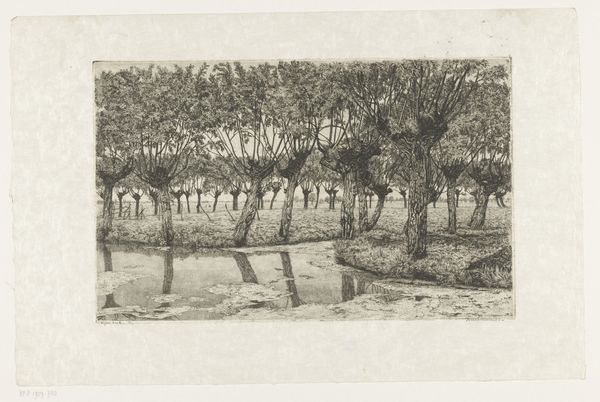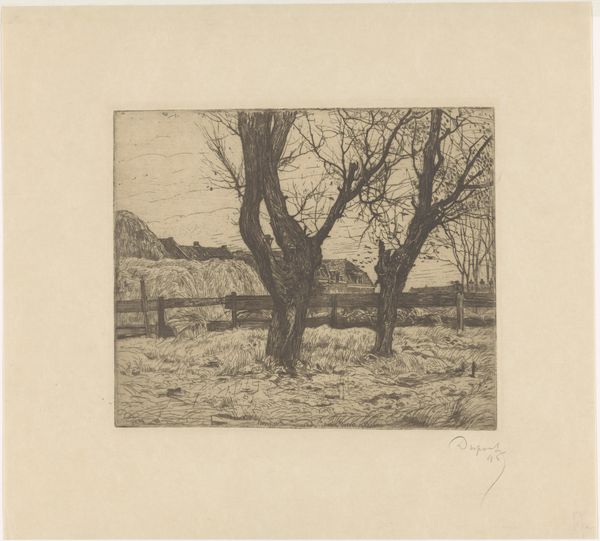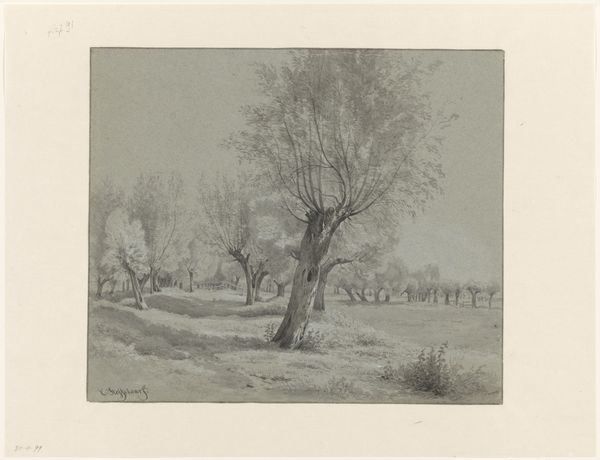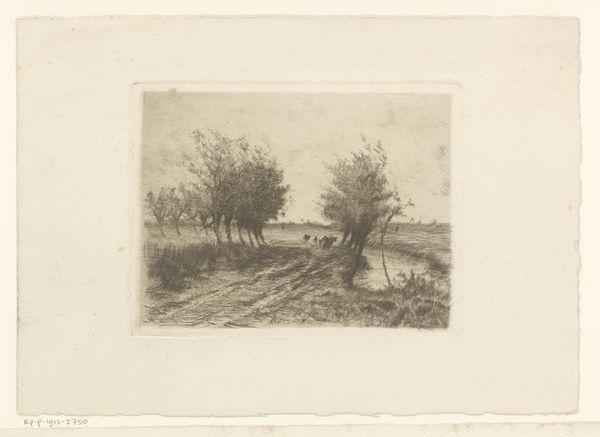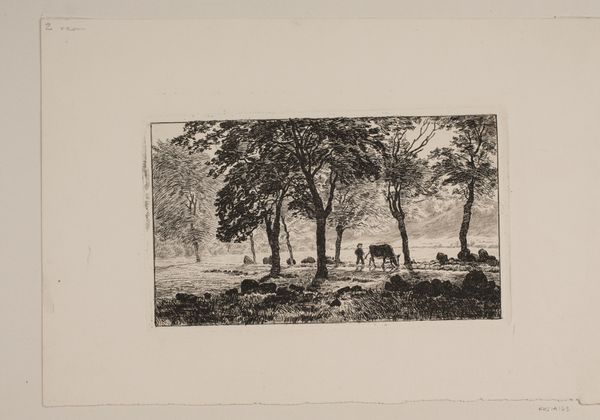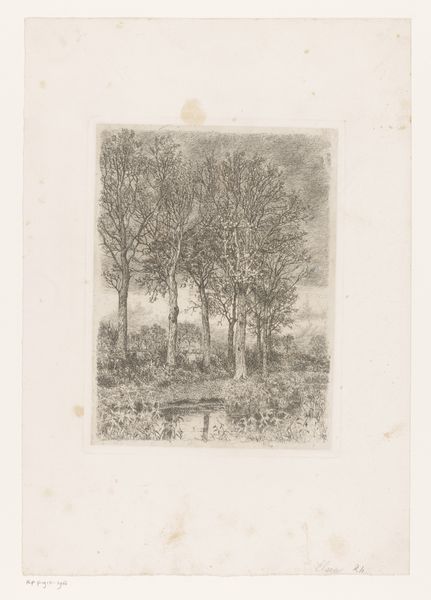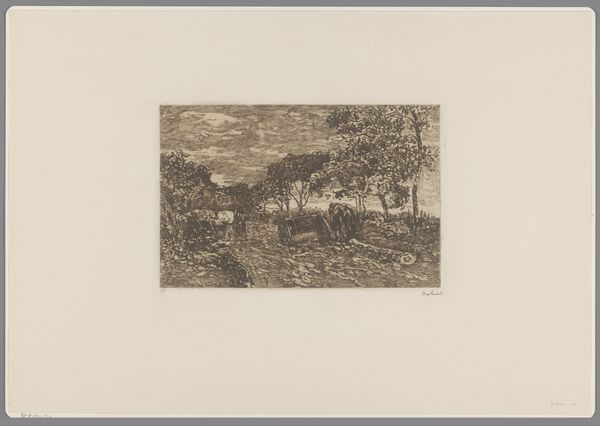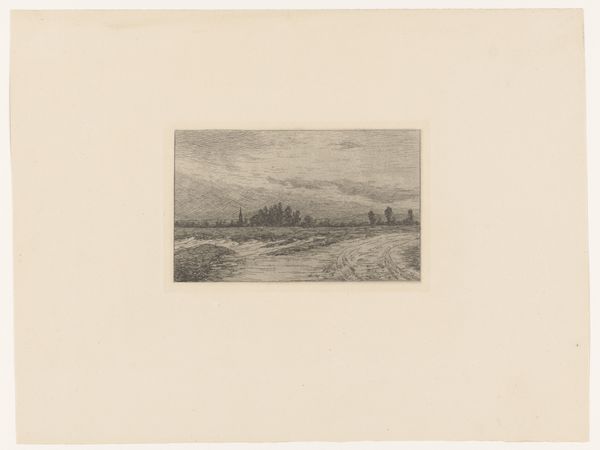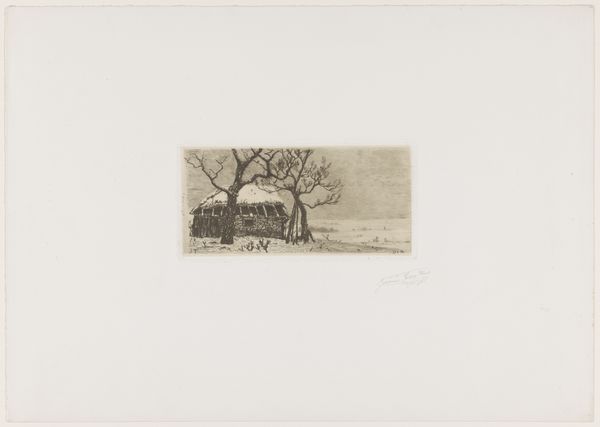
Dimensions: height 151 mm, width 224 mm
Copyright: Rijks Museum: Open Domain
Editor: This is "Weidelandschap met knotwilgen", a landscape made in 1908 by Herman Heuff. It's an etching, so a print, and it feels quiet and a little lonely to me. There's a line of pollard willows reflected in the water. What strikes you most about it? Curator: The scene resonates with a specific moment in the development of Dutch national identity. The image evokes the romanticized view of rural life that became a powerful symbol in the late 19th and early 20th centuries, specifically visible through Impressionism. Notice how this work isn't just a depiction of nature; it's a projection of cultural values onto the landscape. Why do you think Heuff chose this subject? Editor: Maybe because it’s timeless? Far from the industrializing cities, showing something unchanged? Curator: Precisely! This deliberate focus moved away from depictions of urban progress, functioning almost as a critique or an alternative vision promoted at the time by artists’ collectives. It brings us to the important topic of the public role of art in defining and shaping those feelings around landscape. Editor: So it's not just a pretty landscape, but also kind of a political statement? Curator: Exactly. By idealizing the rural landscape, artists also participated in constructing the narrative of the Dutch national character. This also ties in directly with emerging national art institutions at the time. Did exhibiting these works cement the national style and taste, and influence tourism? Editor: That’s really interesting. I hadn’t considered the connection to nation-building. I will rethink my art history books now! Curator: Indeed, every picture has its own cultural, social, and institutional framework. I guess my turn to view these works in a completely different perspective.
Comments
No comments
Be the first to comment and join the conversation on the ultimate creative platform.
